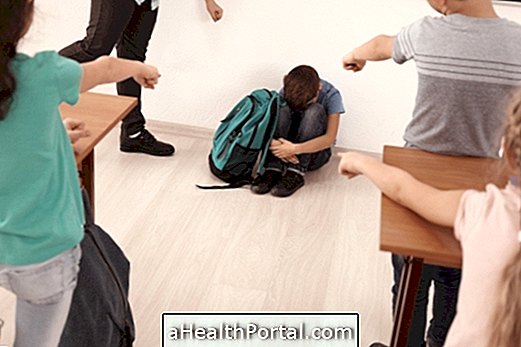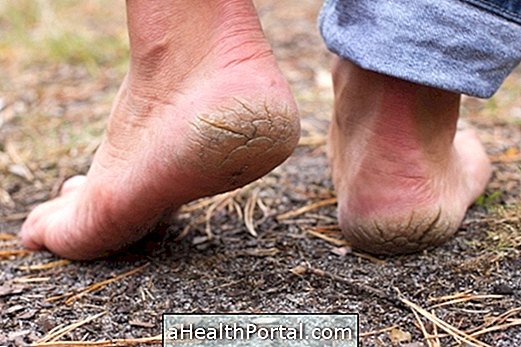Bullying is a psychological torture done by other people in environments such as school or work, being very common in childhood and adolescence. This is an act that may involve physical violence beyond psychological and constantly intentional by one child or teenager to another more fragile.
Bullying at school can lead to school failure or to develop panic attacks, for example, that may impair the child's physical and mental development.

Types of bullying
Bullying can be practiced in a variety of ways, either by name-calling, aggression or isolation, and thus can be classified into some major types:
- Physical bullying, which is characterized by physical violence, ie in this type of bullying the victim takes kicks, punches, kicks or has the passage blocked by the simple fact of wearing glasses, apparatus or being slightly overweight, for example. This type of bullying is common, but often goes unnoticed because it can be interpreted as a joke of friends, for example;
- Psychological bullying, in which the victim is constantly bullied or blackmailed, and is often a victim of slander and rumors, as well as persecution regarding sexual orientation, religion, or weight. Psychological bullying can lead to depression and social phobia, for example;
- Verbal bullying, which is the most common type of bullying practiced in schools and which starts with a nasty nickname, usually related to some characteristic of the person. In addition to the nicknames, this type of bullying is characterized by constant cursing and humiliation, which can cause the child who has suffered verbal bullying to grow up unbelieving in their skills and are afraid to relate to other people;
- Virtual bullying, also known as cyberbullying, is characterized by verbal and psychological attacks on social networks. In this type of bullying the internet is the biggest ally, being the main tool of disseminating photos, videos or malicious comments about the person, making her embarrassed.
- Social bullying, in which the person is constantly isolated from activities and daily living.
It is difficult that only one type of bullying is practiced, normally in schools can be perceived physical, psychological, verbal and social bullying. Although it is relatively common in schools, bullying can happen at any age and in any environment, because any comments made about another person that might interfere with your life can be considered bullying.
Main consequences of bullying
The child or teenager who suffers from bullying constantly cries out of anger and sadness, and in his daily life he manifests feelings of fear, insecurity and anguish, devaluing his qualities.
Bullying in schools can lead to immediate consequences, such as disinterest in school, reduced school performance, isolation, panic and anxiety attacks, violent behavior and physical changes such as sleeping difficulties, eating disorders and even eating alcohol and illicit drugs.
In addition to immediate consequences, bullying can result in long-term problems such as difficulty in relating to people, causing stress at work, poor ability to maintain a loving relationship, difficulty in making decisions, depression, low self- esteem and low profitability at work due to lack of confidence.
However, not every child or teenager who suffers from bullying in childhood or adolescence develops these consequences in adulthood, it depends on your emotional state or support from the school or family you had during the period you were bullied. See what signs of bullying are in school.






















